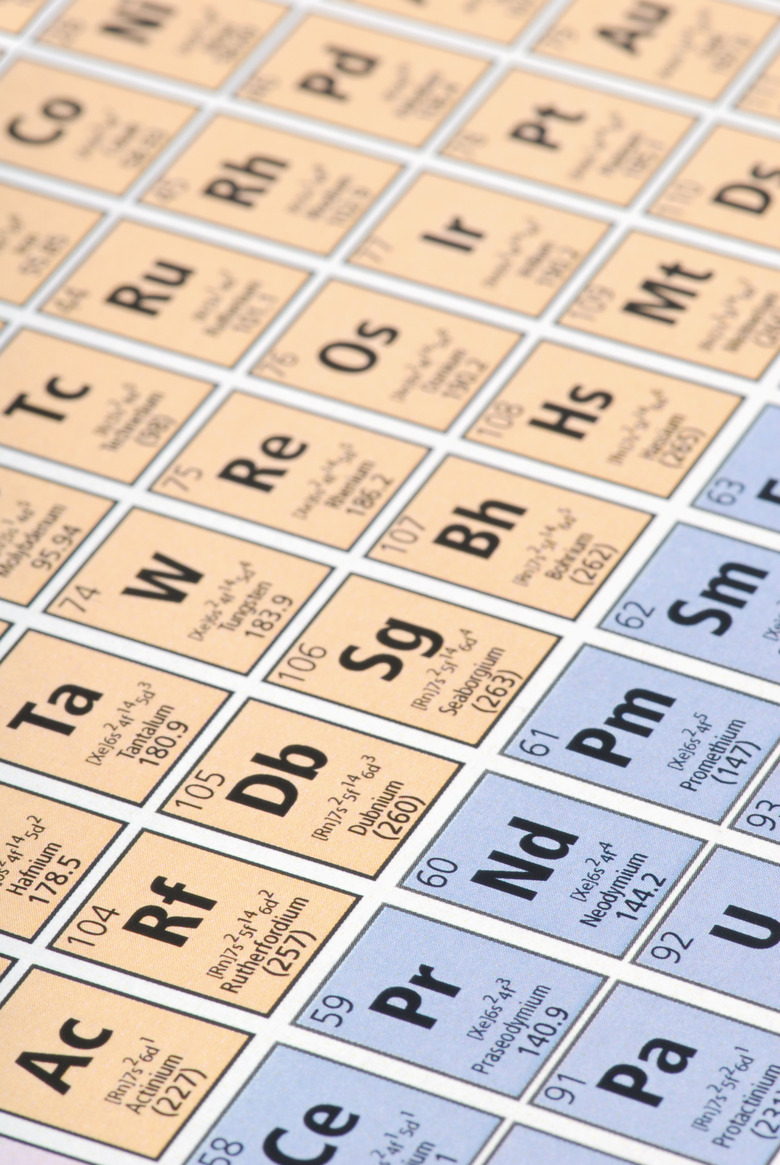How To Calculate Electron Configuration
Sometimes you need to know where electrons are likely to be in an atom. Electron configurations help you to do this. To calculate an electron configuration, divide the periodic table into sections to represent the atomic orbitals, the regions where electrons are contained. Groups one and two are the s-block, three through 12 represent the d-block, 13 to 18 are the p-block and the two rows at the bottom are the f-block. The row numbers one through seven represent the energy levels that contain the orbitals and electrons.
Writing the Configuration
Writing the Configuration
Starting at the top of the periodic table and moving from left to right across the rows, write the row number, the block letter and how many squares are in each block's section until you get to the desired element. To calculate the electron configuration for phosphorus (P), which is in the third row, p-block, third element in that block, write: 1s2 2s2 2p6 3s2 3p3. Check your work by adding the electron numbers to see if they equal the atomic number of the element; for this example, you would write: 2+2+6+2+3=15, which is the atomic number of phosphorus.
Special Instructions
Special Instructions
Because an atom's orbitals sometimes overlap in real life, you must account for that in your configurations. For the d-block, change the row number to one number less than it actually is. For example, the electron configuration for germanium (Ge) is 1s2 2s2 2p6 3s2 3p6 4s2 3d10 4p2. Notice even though you are on row four, it is called "3d" to account for overlap.
References
- Glencoe Chemistry: Matter and Change; Laurel Dingrando et al.
Cite This Article
MLA
Ezell, Ashley K.. "How To Calculate Electron Configuration" sciencing.com, https://www.sciencing.com/calculate-electron-configuration-6018333/. 24 April 2017.
APA
Ezell, Ashley K.. (2017, April 24). How To Calculate Electron Configuration. sciencing.com. Retrieved from https://www.sciencing.com/calculate-electron-configuration-6018333/
Chicago
Ezell, Ashley K.. How To Calculate Electron Configuration last modified March 24, 2022. https://www.sciencing.com/calculate-electron-configuration-6018333/
